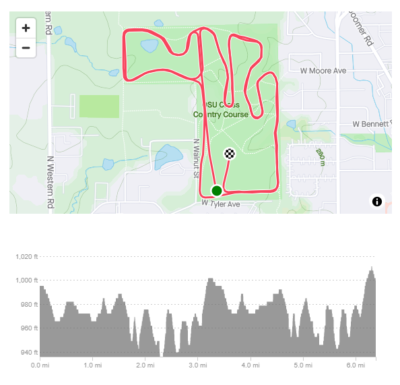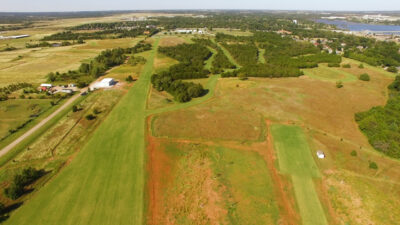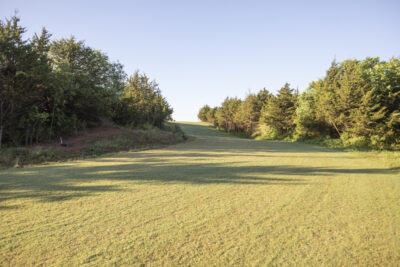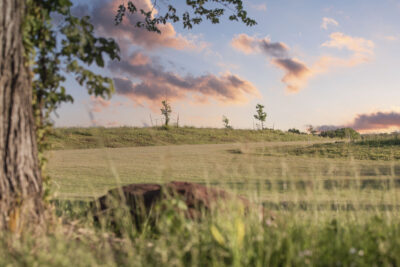“It Will Be a Bloodbath” — Are You Ready for the Hardest NCAA XC Course in Recent Memory?
By Jonathan Gault
March 11, 2021
(Editor’s note: 11/18/2022 – This article was written about the course in March of 2011 but we brought it back out).
“This course is a different thing than we’ve seen in NCAA Cross Country Championships in a while.” — Northern Arizona’s Mike Smith
“In terms of a national championship course, it’s the hardest that I’ve seen in 21 years [of coaching].” — BYU’s Ed Eyestone
“The course that we’re going to is as close to the Pike’s Peak Hill Climb as they come.” — Arkansas’ Lance Harter
That is how three recent NCAA title-winning coaches describe Oklahoma State’s cross country course, which will host the NCAA Cross Country Championships for the first time on Monday.
In fairness, “hardest NCAA XC course in recent memory” is not an exceptionally high bar to clear. Only three courses have hosted NCAAs in the last 16 years: Louisville (very flat), Terre Haute (gradual climbs and descents, but you wouldn’t call it hilly), and Madison (some undulation, but not a “hard” course). The OSU layout is nowhere close to as tough as the rollercoaster Aarhus course at 2019 World XC.
And despite the hills, the footing in Stillwater is exceptional most of the time. Oklahoma State coach Dave Smith says “there are no blemishes” and compares it to running on AstroTurf. He’s not wrong: the actual name of the grass used on the course is Astro Bermuda, almost one million square feet of it in all.
Cue the messageboard posts about how this IS NOT REAL CROSS COUNTRY.
Regardless of what the XC diehards may think about the course, which re-opened in 2019 after undergoing almost $4 million of renovations, the NCAA’s top coaches view it as a serious challenge, which is why they were so eager to run on it this season.
“Probably there’s more elevation change on our course than any other course I’ve been a part of at the NCAA Championship level,” says Dave Smith. “So I think that part is interesting and challenging. It presents opportunity for strategy that might not be as prevalent on some other courses. So I’m excited about that.”
Northern Arizona made the trip out for the OSU Invitational in October and tried to visit again for a race on February 20, only to be foiled by Mother Nature when a blizzard pushed the meet back two days, cancelling the trip. Eyestone felt it was so important for his guys to check out the course last fall that when they competed there in October, he convinced 2018 All-American Clayson Shumway (who was not taking classes in the fall and thus could not travel with the team) to drive 30 hours round-trip from Provo to Stillwater so he could scope out the venue. Pac-12 rules prevented Colorado from officially competing last fall, but Mark Wetmore still managed to send his men’s and women’s teams to the OSU Invitational, where they raced unattached.
The course itself starts out with an 850-meter straightaway — a gradual downhill into a gradual uphill — which effectively divides the course in two. To the left is an open, relatively flat one-mile perimeter loop, which the men will run twice as part of the 10K course (the women’s 6K loop avoids this section entirely). To the right is wooded section featuring a series of finger loops, and that is where runners will encounter the hills. Every step in those loops is either climbing or descending, and while there aren’t many monster climbs (the largest elevation difference on the course is roughly 70 feet), all those ascents add up. The finish is particularly tough: runners climb from the course’s lowest point 800m from the finish to its highest point 200m out, before a short, steep downhill final straightaway.
(You can view the course maps here. OSU hasn’t published a full elevation profile, but you can get an idea of the 10K course by checking out the Strava log of Missouri’s Tom George, who finished 2nd there at the 2019 Midwest Regional).
 There isn’t a lot of flat on this one – Per Tom George’s Strava
There isn’t a lot of flat on this one – Per Tom George’s Strava
Mike Smith’s prediction?
“A bloodbath…I think Monday afternoon, after this event, everyone will have a lot more respect for the Oklahoma State cross country course.”
The hilly nature of the course, Smith says, means that athletes will face some of the toughest parts of the race far earlier than they are used to. If you’re a men’s runner who likes to relax and establish a rhythm in the first half of the race, you’re in for a rude awakening when you hit 1.5 miles in Stillwater and are met with an onslaught of hills.
“I think that this is going be very hard very early and that’s just the way challenging, hilly courses of any kind go,” Smith says. “So that turns into not only a physical experiment but, ultimately, a psychological experiment. That changing terrain, you have to be willing to be in big distress early and talk yourself through that. A lot of people are perfectly fine with being in the redline when they’re close to home. Courses like this I think just challenge that, the way you manage your discomfort.”
Smith also believes that anyone who has not trained specifically for the course will be at a disadvantage. There will be athletes doubling back from NCAA Indoors on Friday and Saturday, and if they’re not prepared for the demands of a grueling cross country race, they will be punished.
“I think if there was a year you could get away with running 3ks on the track and just moseying on over to cross country course, maybe in Louisville or Terre Haute, you could do that,” Smith says. “I don’t think this is that situation. I think it benefits us greatly that we saw this last fall and were able to tailor the upcoming months of training around the specifics of it.”
For Dave Smith, Monday’s race is the culmination of a dream almost 20 years in the making. As soon as Smith arrived at Oklahoma State in 2002, he was thinking about hosting NCAAs. OSU already had an on-campus course when he arrived, but it took him a while to actually bid for the meet.
“Our expectations of what a championship course looks like has changed over the last 20 years,” Smith says. “So every time I thought we were getting to a point to where maybe we could put in a bid, the goalposts would move.”
Smith finally bid for the meet in 2017, with the understanding that OSU would make the necessary improvements to the course in time to host in 2020 (now 2021).
“I went to my AD (Mike Holder) and said, we got the bid, we’ve gotta have a course,” Smith says. “And luckily he didn’t fire me. He stepped to the plate and did amazing things, gave me far more than I thought, far more than I asked for in terms of upgrades. He wanted to have the best course in the country, that was his goal…I’m just thrilled, as a track coach and a distance coach, to have a university invest huge sums of money into prioritizing our sport.”
One thing that could (slightly) dampen Smith’s optimism?
“It looks like we’re gonna have a fair amount of rain over the weekend, which seems to be the way cross country goes, no matter where we go and what time of year we go,” Smith says. “The good thing about our course is it’s elevated, it’s got drainage ditches along the side, it’s got culverts that go underneath it. It does not hold water — the water runs off pretty well. I think even with a lot of rain in the next few days, we could be okay by race time where it’s not going to get too sloppy. But certainly it’s going to be a little softer than it has run all year.”
Indeed, there is rain in the forecast for the next four days (though none on race day, which is set to be 63 degrees and partly cloudy). And that’s okay. This is cross country! Part of the appeal is that things don’t go perfectly. Hills, rain, mud? All part of the deal.
More than anything, Smith — like the rest of the coaches headed to Stillwater on Monday — is grateful. Last summer, with COVID-19 wreaking havoc on fall sport schedules, it looked as if the meet he had dreamed of hosting for almost two decades might slip away. But the sport has made it. NCAA XC is finally here. It’s time to get excited.
More: Play in the $200,021 LRC Running Warehouse NCAA Prediction Contest here



